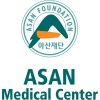
Dabigatran Versus Conventional Treatment for Prevention of Silent Cerebral Infarct in Atrial Fibrillation...
Atrial FibrillationValve Heart DiseaseThe prevalence of AF, which is tachyarrhythmia, is approximately 2% of the entire population and 5% of the population at the age of 60 or older. AF is the cause of approximately 20% of all events of ischemic stroke, and patients with AF are known to be at 6 to 10% risk of ischemic stroke per year. Patients with valvular AF are known to have a higher incidence of stroke than patients with nonvalvular AF. However, the relevant data are insufficient as large randomized studies comparing NOAC treatment with warfarin, a conventional treatment, did not include many patients with moderate and severe valvular AF. Ischemic stroke is divided into symptomatic stroke with brain lesions on brain magnetic resonance imaging (MRI) and silent cerebral infarct with lesions on brain MRI but without stroke symptoms. According to a brain MRI follow-up study, the incidence of silent cerebral infarct was 17.7% (254 subjects) over a period of 5 years, with 11.4% of 254 subjects reporting to have experienced symptoms. This means that the incidence of silent cerebral infarct is approximately 9 times that of symptomatic stroke. In addition, patients with a history of silent cerebral infarct are known to be approximately twice more likely to experience stroke in the future than those without a history of silent. Brain microbleed is easily detected by brain MRI and is a well-known independent predictor of intraparenchymal hemorrhage and silent cerebral infarct. The prevention of stroke by the study drug can be indirectly assessed based on the incidence of silent cerebral infarct and brain microbleed on brain MRI. Investigators tried to compare effect of dabigatran with conventional treatment in terms of prevention of stroke by comparing incidences of silent cerebral infarct and brain microbleed and symptomatic stroke using brain MRI.

Second Study on Cardio-neuromodulation in Humans
Cardiac DiseaseSyncope3 moreDifferent approaches to cardio-neuroablation (CNA) to treat neurally mediated syncope, sinus node dysfunction, and functional atrioventricular block have been published. Investigators have developed a more limited and specific approach of CNA, called cardio-neuromodulation (CardNM). This treatment is based on a tailored vagolysis of the sinoatrial node through partial ablation of the anterior right ganglionated plexus (ARGP); it is also based on an innovative anatomic strategy. The feasibility of CardNM has already been tested in our center in a limited first study in humans (CardNMH1), with a favorable outcome for the patients involved. The results of CardNMH1 have been submitted for publication. The purpose of this second study of CardNM in humans (CardNMH2) is to collect more procedural and clinical data in well-defined patient groups.

Metoprolol to Reduce Perioperative Myocardial Injury
Heart DiseasesThe purpose of this research study is to test if a commonly used, FDA-approved medication, called metoprolol, given at the conclusion of anesthesia following surgery, and during postoperative admission, reduces the possibility of heart related complications in patients with coronary artery disease (CAD).

DAA Treatment in Donor HCV-positive to Recipient HCV-negative Heart Transplant
End Stage Heart DiseaseHepatitis CThis is a proof of concept, single center study for the donation of HCV-positive hearts to HCV negative recipient patients, with preemptive, interventional treatment with 12 weeks of commercially available DAA therapy to prevent HCV transmission upon transplantation.

AtRial Cardiopathy and Antithrombotic Drugs In Prevention After Cryptogenic Stroke
StrokeObjectives Primary: To test the hypothesis that apixaban is superior to aspirin for the prevention of recurrent stroke in patients with cryptogenic ischemic stroke and atrial cardiopathy. Secondary: To test the hypothesis that the relative efficacy of apixaban over aspirin increases with the severity of atrial cardiopathy.

Low Dose Interleukin-2 in Patients With Stable Ischaemic Heart Disease and Acute Coronary Syndromes...
Ischemic Heart DiseaseThe mainstay for treatment for acute coronary syndrome (ACS) focusses on re-establishing and maintaining the patency of vessels following coronary plaque disruption, through the use of anti-platelets and anticoagulants. Despite advances in management ACS still carries a high risk of morbidity and mortality, thus future management is likely to target other pathways. Recent studies indicate that CD4+ T cells, and more specifically Treg cells, are important for the control of post-ischemic immune responses and the promotion of myocardial healing. The investigators therefore hypothesise that expansion of Treg cells in patients with ACS dampens the activation of the immune response and promotes both plaque and myocardial healing. The investigators hypothesise that this can be achieved through subcutaneous administration of low doses of interleukin-2 (IL-2). IL-2 supplementation appears to be an attractive therapeutic option playing a key role in Treg cell development, expansion, survival and suppressive function.

Coronary Microcirculatory and Bioresorbable Vascular Scaffolds
CHD - Coronary Heart DiseaseAngina2 moreAngina and heart attacks are caused by narrowings in the coronary arteries (blood vessels) supplying the heart. These narrowings can be opened using a balloon and stent (angioplasty). Traditionally, stents are constructed from metal and are permanent. However, newer stents are being constructed from carbohydrate polymers (scaffolds), which allow them to reabsorb over time leaving no permanent implant. New data has suggested that these scaffolds appear to reduce recurrent angina and may alter the blood flow down the artery. However, it is not known whether this is due to the scaffolds themselves or the way the scaffolds are inserted. In this study we hope to measure the blood flow to the heart and assess changes in that flow during stent and scaffold insertion. It is also important to know whether these effects are durable and thus, a cohort of patients will return at 3-months to be restudied. These data are important to help us understand why blood flow is affected by stent/scaffold selection or device implantation technique and whether this results in better long-term outcomes.

Impact of Enhanced External Counterpulsation on Vascular Hemodynamics and Status
Coronary Heart DiseaseThe present study aimed to investigated the effect of Enhanced External Counterpulsation (EECP) on vascular hemodynamics and atherosclerosis, and the underlying shear stress related mechanisms

Safety and Effectiveness of the Orsiro Sirolimus Eluting Coronary Stent System in Subjects With...
Coronary Artery DiseaseAtherosclerosis5 moreThe objective of this study is to assess the safety and efficacy of the Orsiro Sirolimus Eluting Coronary Stent System in the treatment of subjects with up to three native de novo or restenotic (standard PTCA only) coronary artery lesions compared to the Xience coronary stent system.

RIvaroxaban for Valvular Heart diseasE and atRial Fibrillation Trial -RIVER Trial
Valvular Heart DiseaseRIvaroxaban for Valvular heart diseasE and atRial fibrillation trial (RIVER trial).
